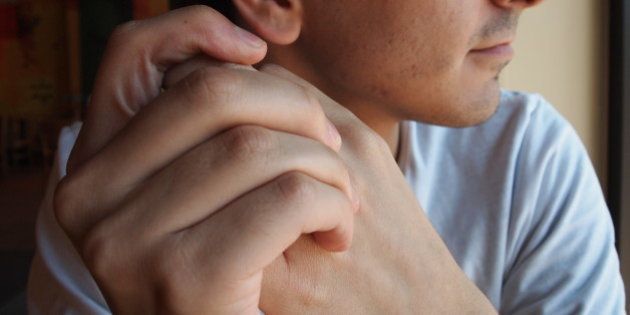
Consider this when you're cracking your knuckles next time: the distinctive popping sounds heard when cracking knuckles is caused due to a cavity forming rapidly inside the finger joints, scientists have found for the first time.
"We call it the 'pull my finger study' - and actually pulled on someone's finger and filmed what happens in the MRI. When you do that, you can actually see very clearly what is happening inside the joints," said lead author Greg Kawchuk, a professor at the University of Alberta.
Scientists have debated the cause of joint cracking for decades, dating back to 1947 when UK researchers first theorised vapour bubble formation as the cause.
That was put in doubt in the 1970s when another team of scientists instead fingered collapsing bubbles as the cause.
The idea for the project was born when Nanaimo chiropractor Jerome Fryer approached Kawchuk about a new knuckle-cracking theory.
They decided to skip the theories and, with U of A colleagues decided to actually look inside the joint.
But to find an answer, the team needed someone capable of cracking knuckles on demand - a job that fell to Fryer himself.
Kawchuk said most people have the ability to crack their knuckles, but unlike most, Fryer can do it in every finger, and after the standard recuperation time, he can do it again.
Fryer's fingers were inserted one at a time into a tube connected to a cable that was slowly pulled until the knuckle joint cracked. MRI video captured each crack in real time - occurring in less than 310 milliseconds.
In every instance, the cracking and joint separation was associated with the rapid creation of a gas-filled cavity within the synovial fluid, a super-slippery substance that lubricates the joints.
"It's a little bit like forming a vacuum. As the joint surfaces suddenly separate, there is no more fluid available to fill the increasing joint volume, so a cavity is created and that event is what's associated with the sound," Kawchuk said.
More than settling a scientific curiosity, the findings pave the way for new research into the therapeutic benefit or harm of joint cracking, said Kawchuk.
Scientists have calculated that the amount of force at work when you crack your knuckles has enough energy to cause damage to hard surfaces, yet research also shows that habitual knuckle cracking does not appear to cause long-term harm.
Those conflicting results are something Kawchuk and his team plan to investigate next.
"The ability to crack your knuckles could be related to joint health," said Kawchuk, who believes this work could have implications for other joints in the body, including the spine, and help explain why joints become arthritic or injured.
The study was published in the journal PLOS ONE.



Contact HuffPost India